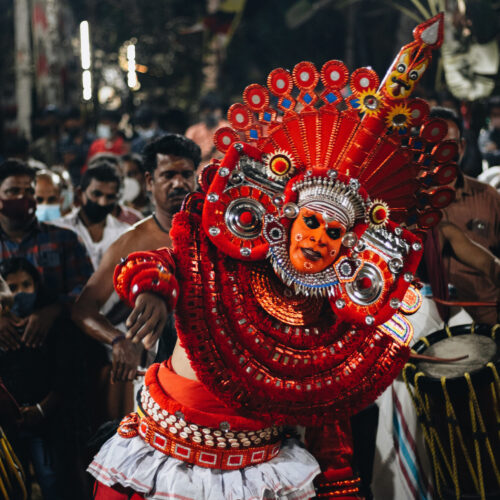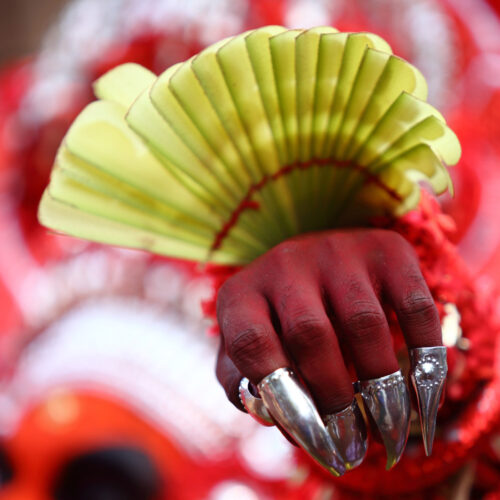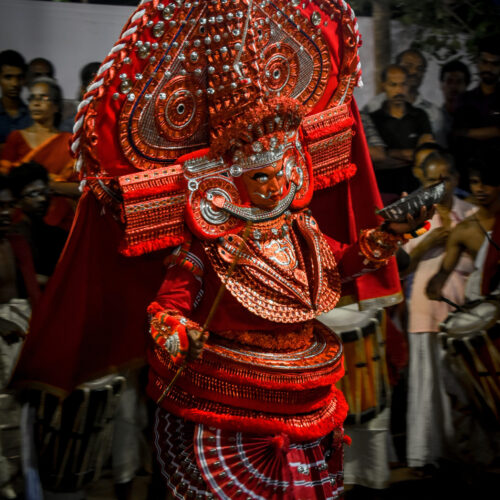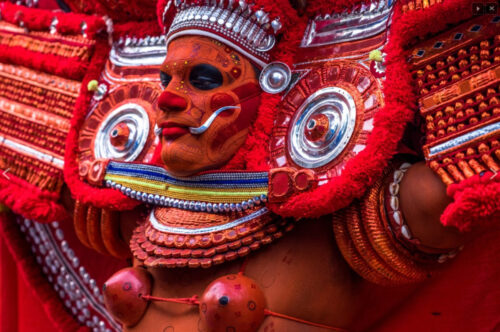
The origins of Theyyam can be traced back several centuries in northern Kerala, where it has evolved from ancient tribal rituals and animistic beliefs into a highly stylized form of worship. Rooted in the rural communities of Malabar, Theyyam blends elements of dance, music, and dramatic storytelling. Over time, it has become a vital thread in Kerala’s cultural tapestry, celebrating local legends, heroes, and deities through elaborate performances. Its evolution mirrors Kerala’s historical shifts from tribal societies to more structured Hindu communities, yet Theyyam has preserved its ritualistic essence.
Theyyam is revered in Kerala’s folklore, connecting communities to their ancestral roots and mythological past. Each Theyyam deity represents a facet of nature, history, or ancestral spirits, embodying the collective memory and wisdom of the region. The vibrant costumes, intricate makeup, and symbolic rituals reflect a deep reverence for nature and divine forces, offering a glimpse into Kerala’s spiritual and cultural ethos.


Theyyam is not merely a performance but a sacred ritual where the performer, often from a lower caste background, becomes a channel for divine energy. Believed to undergo a temporary transformation into the deity they portray, Theyyam performers are revered as living gods during the ritual. This belief fosters a sense of communal harmony and social cohesion, as villagers from all walks of life participate in and support Theyyam ceremonies. The performances are believed to invoke blessings, heal ailments, and ensure prosperity for the community, making Theyyam a cornerstone of Kerala’s spiritual and social fabric.
